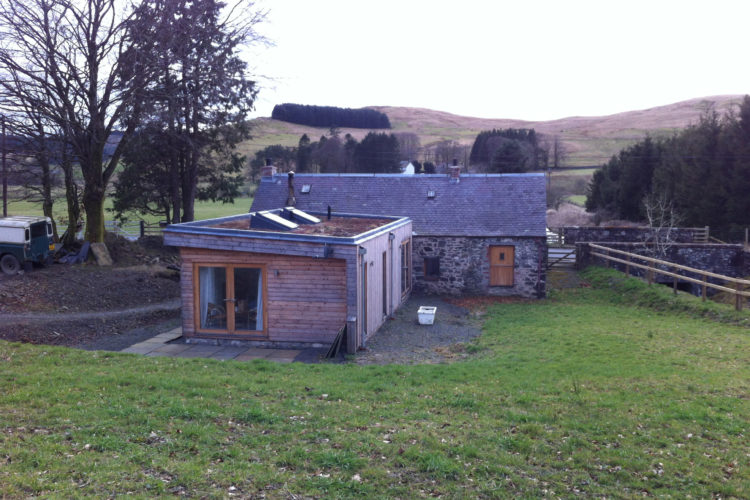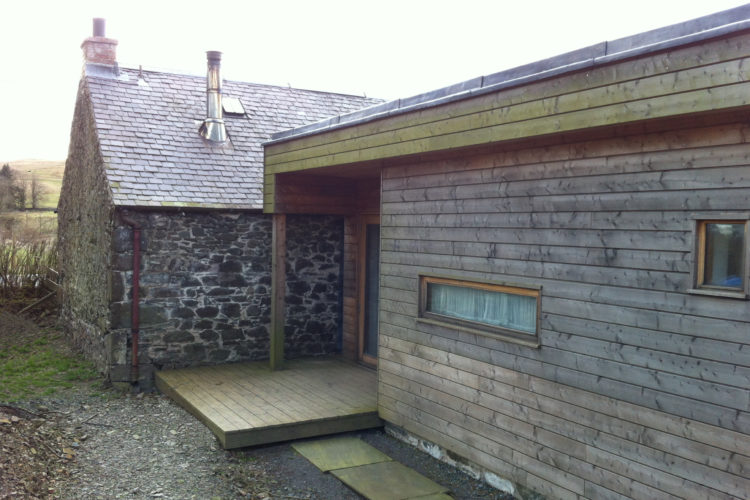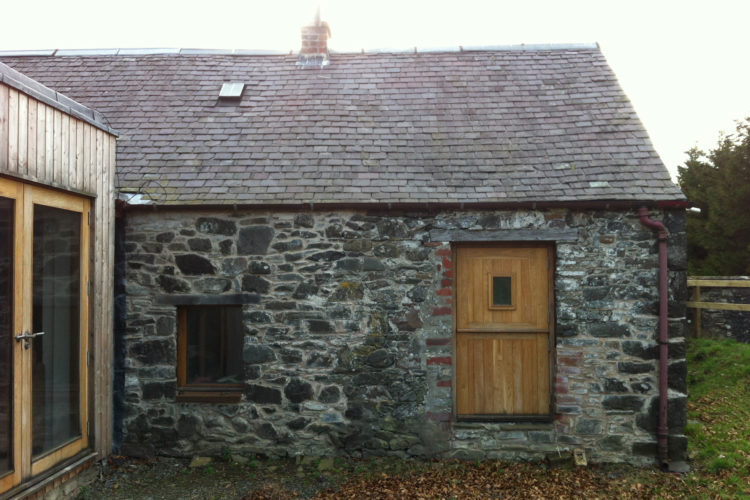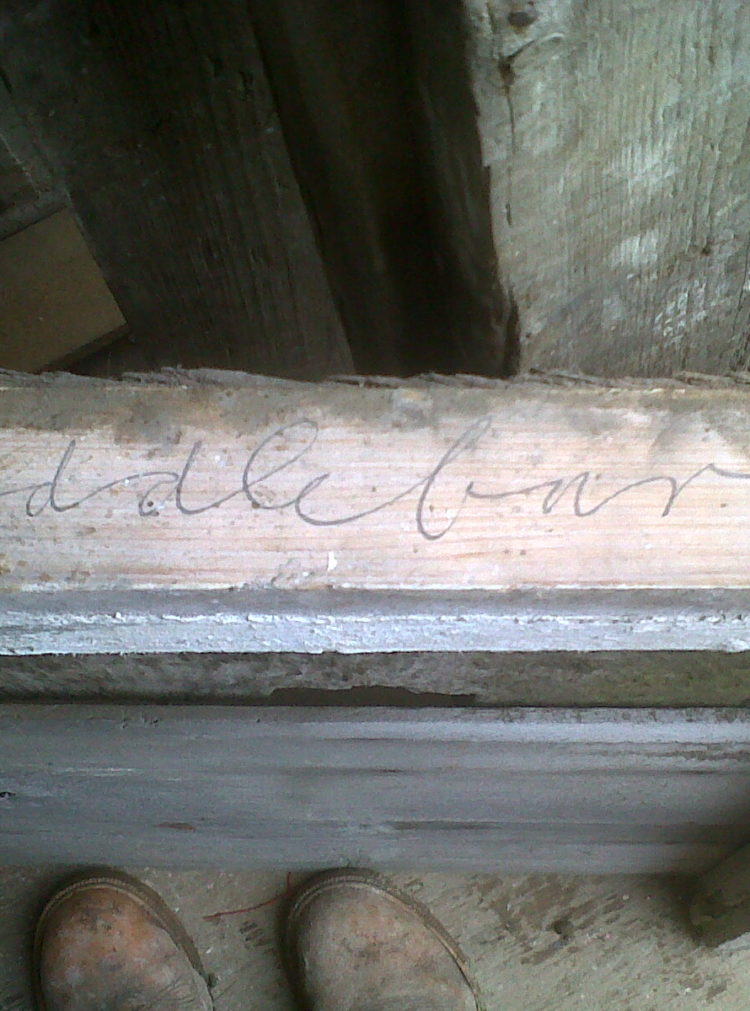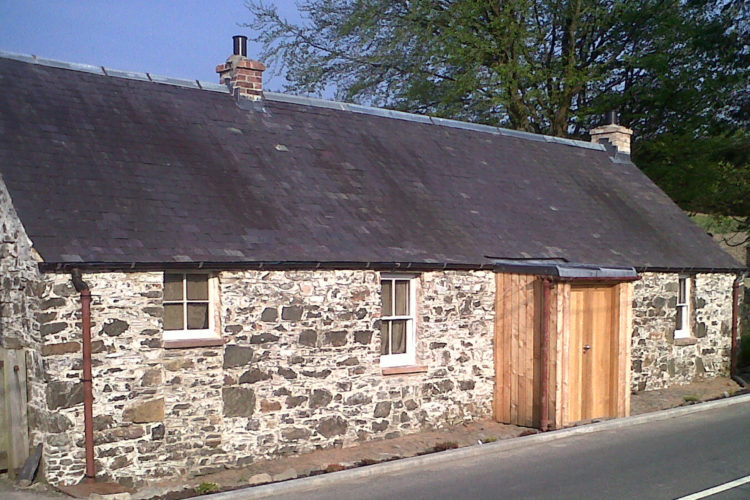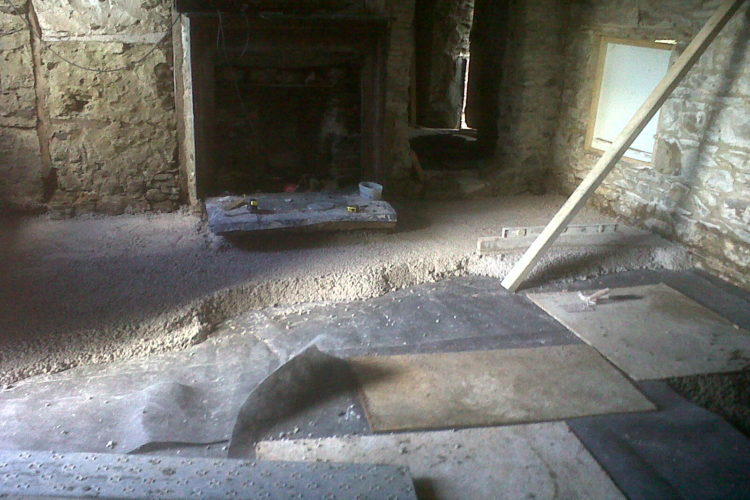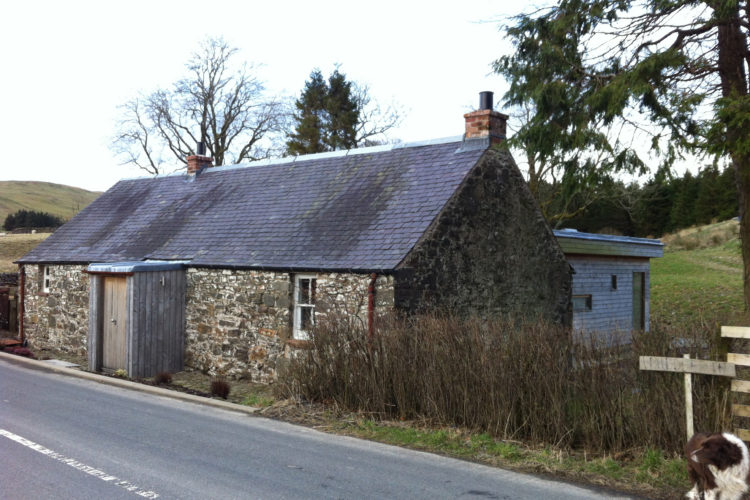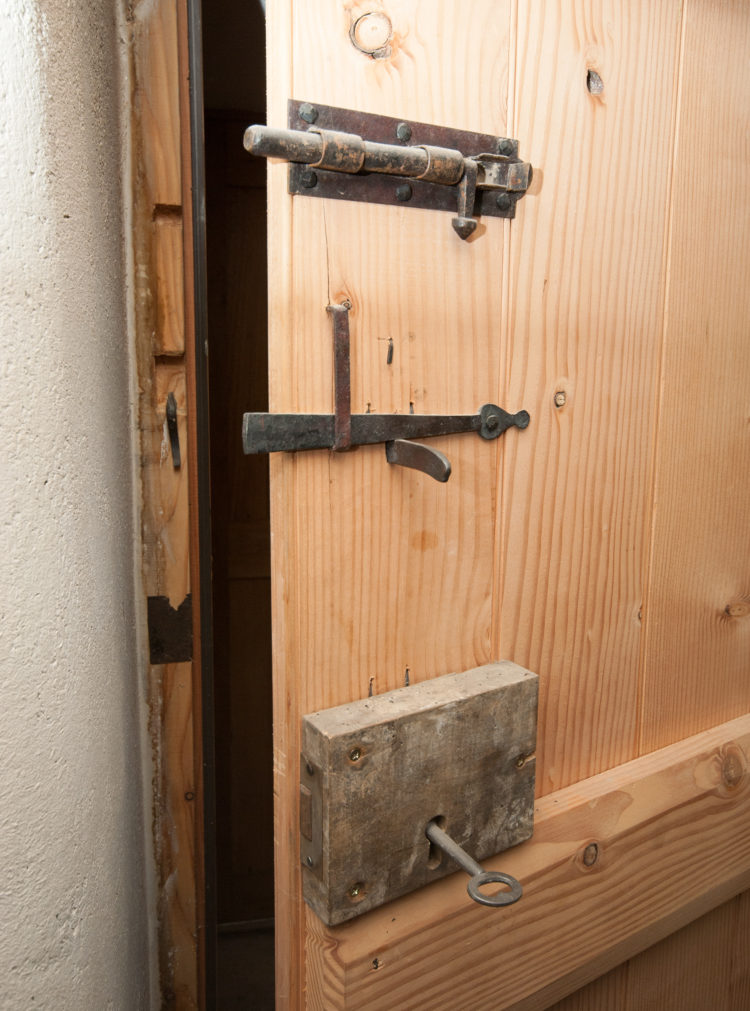We were commissioned by our Client to provide architectural services to assist them with the restoration, alterations and extension of an unlisted and derelict traditional stone built ʻbut and benʼ located directly on the road verge just outside the village of Eskdalemuir.
The main aspect of their brief was that the cottage was restored using traditional conservation techniques. The existing ʻbut and benʼ cottage was to be retained with the ʻbutʼ forming the open living / kitchen area and the ʻbenʼ becoming a bedroom. In addition a modest rear extension was to be designed. The extension was to accommodate a master bedroom, bathroom and sun lounge area. The new extension was to use natural / traditional materials and be highly insulated.
The rear extension was designed to complement the original building and is barely visible when viewed from the front and when viewed from the hills this merges into the landscape due to the use of natural timber and turf.
This project was seen very much as a conservation project not only to preserve and restore the original cottage but to carefully design a sympathetic and modern extension which did not result in any loss of historic character of the ʻbut and benʼ.
Preservation where at all possible of the existing fabric to retain the historic integrity of the cottage was key together with the intention to use of breathable materials and traditional building methods.
There was also an approach not to pristinely restore the building by the removal of later alterations such as the brick built chimneystacks and brickwork inbands to the byre door opening as this would result in the loss of the historic integrity and the story of the building.
There was to be no unnecessary disturbing or destroying of the building fabric no matter how minor. If any part of the fabric required to be replaced on a like-for-like basis to match existing this was the absolute last resort.
Any part of the existing fabric that could not be repaired was considered for a new use to further enhance the historic character of the restored building.
This project received a Commendation in the Sustainability Category at the Glasgow Institute Awards.
